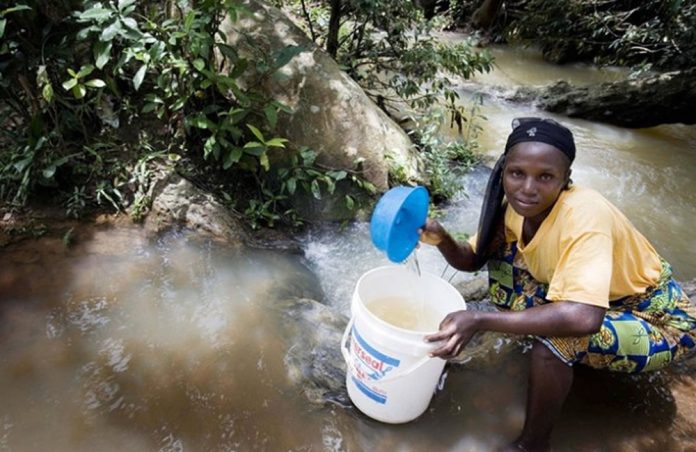Uganda is a very healthy place to visit, or to live and work. Uganda is in the tropics and people may expect to see a lot of tropical diseases. Reality is different. People seldom get tropical diseases, they get pretty much the same sort of problems they could get in Europe or America: backaches, coughs/colds, hangovers etc. There are one or two exceptions. Last edition looked at one fairly common tropical disease, malaria. This month another tropical disease that enjoys more rumors than reality – Bilharzia.
There are 2 types in Africa. Schistosoma mansoni and Schistosoma haematobium. Mansoni lives in the terminal veins of the large bowel and haematobium lives in the bladder. However occasionally they get lost and go to the wrong place.
The male is flat like a piece of paper and the female a tube like any other worm. The male wraps himself around the female and swims down to the end of the vein. There they spend their entire life in permanent copulation, before dying of exhaustion after about 5 years. They are invisible to our immune system and do not do us any harm. However, all that copulation has its price and she lays lots of eggs. The eggs are supposed to work their way through the tissues into the bowel or bladder and are voided in stool or urine. Unfortunately, they also get lost and set up a vigorous immune response. This causes all the problems of Bilharzia.
- Swimmers itch is the red itchy rash you get a few minutes after swimming. It is an immune reaction to the cercaria, and is mostly due to avian schistosomes, not human.
- Local – You can develop granulomata around the eggs wherever they are, in the bowel and bladder mostly. However they can also damage the prostrate if you have one and all round the ovaries, tubes etc if you have those. Indeed one girl who thought she had a genital wart had in fact a Bilharzia granuloma. There are even stories of paralysis from granulomata in the spinal chord.
- Liver Damage – “Pipe stem fibrosis” is the classic liver damage from Bilharzia. I’ve never seen it. However, most people can expect a vague hepatitis sort of picture from inflammation of the liver; – nausea, discomfort and feeling generally unwell.
- Problems from circulating immune complexes. The first time you get it you may develop an acute fever, often with a cough. Safari itch, a red blotchy on/off rash is also common. After that, it mostly just makes us very tired, but can cause bizarre immunological symptoms such as arthritis. Children can become very tired, irritable and moody. They may drop behind in school. Teenagers simply become worse than usual.
How to get Bilharzia
This is easy, a lot easier than malaria. Simply swim, wade, water ski, sail or go skinny dipping at midnight in any of the main lakes. Lake Victoria, Lake Albert, Malawi and Kariba are notorious. Lake Namugabu seems to have a low risk. Lake Bunyoni is safe. White water rafting is slightly risky.
The eggs are in the stools and urine of infected humans and are washed into the lake by rain, if not deposited directly. The eggs hatch into little larvae and penetrate the right species of water snail. That’s why we mostly have Mansoni in Uganda, because the snail host for the bladder type isn’t common in our end of Lake Victoria.
The larvae multiply in the snails, which release thousands of “cercaria” into the water. They only live about 36 hours, so need to find human skin very quickly. That’s why you don’t get Bilharzia from bath water or deep water, only around the edges where the snails live.
The cercaria penetrate intact skin – you do not get Bilharzia from drinking lake water. They wriggle through the skin, get into the blood and are carried to the liver. There the little boys and girls meet, how I’m not sure. Perhaps in intrahepatic discotechs and nightclubs. The male wraps himself around the female of his choice and swims off down the vein to the terminal veins of the bladder or bowel according to his species where they begin their 5 years of egg laying all over again.
Why are the local fishermen healthy?
Immunity. The adults are hidden from our immune system but we have an intense immune reaction to the eggs: hence the symptoms. These antibodies attack the invading cercaria and kill them. So our own egg laying females prevent re-infection from new cercaria.
So our first infection may be heavy and even dangerous. However the antibodies prevent new infection. As the adults die off after 5 years, we get fewer and fewer symptoms and eventually live in harmony with a few egg layers stimulating our immunity. Very few make it past the antibodies to replace the ones that die. This is called concomitant immunity and leads to a relatively safe and healthy equilibrium.
Treatment
If you don’t want to wait 5 years for equilibrium to occur, there is an alternative.
Praziquantel is safe and effective. It comes in “horse pills” of 600mg. We used to give 1 tab per 15kg but the most recent literature is advocating 1 tab per 10 kg, taken in 2 doses 4 hours apart with food. It makes you a bit dizzy and drunk for about an hour, which is why we suggest taking it 4hrs before and then 2nd dose with supper, and then going to bed.
If you do have Bilharzia then a single dose of praziquantel will kill most of them, but others may recover. There may be a fever, odd cramps and a general feeling of being unwell for 2 days after treatment as a reaction to the dead worms. 3 months later the survivors may begin laying eggs again with more symptoms of tiredness etc.
If you are leaving the country it is better to take praziquantel on 3 consecutive nights to make sure they really are all dead. If you are sailing every week, one option is to take 1 dose every 6 months or so or whenever you feel ill. That way the concomitant immunity continues to prevent re-infection.
Those who have been in and out of the lake for years and are perfectly well are in a state of equilibrium. In which case, do nothing.
Summary
Bilharzia is not a serious problem if treated sensibly. Water sports are good healthy exercise. My advice is go in the lake if you want, be ready for the first symptoms 6 to 8 weeks later, and take treatment. Children should be allowed to play in the lake, and should be given treatment 8 weeks after exposure and again every 6 months. Those leaving the country should take 3 doses on consecutive nights.










